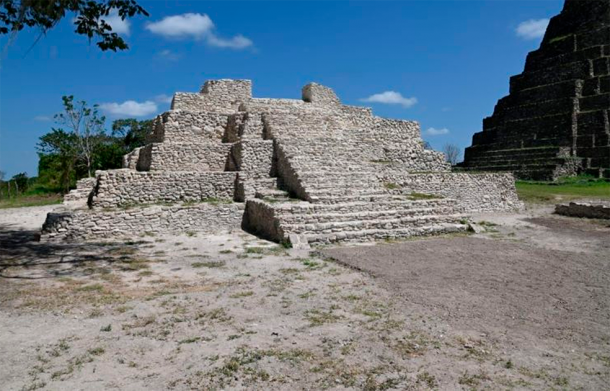Archaeologists from Mexico’s National Institute of Anthropology and History (INAH) have made an exciting discovery at the Moral-Reforma Archaeological site in Balancán, Tabasco: 13 human burials at the stairway of a temple-pyramid, with some of the skulls showing decapitation marks! Eight of these appear to be young men who were seemingly decapitated as part of a ceremony to consecrate a temple, with some as old as 2,000 years.
The nature of the decapitation marks on the skulls suggest that the victims (or casualties) were from an elevated social status. Most importantly, the find provides new insight into a possible link between the temple-pyramid structure and death or even the structure and a Maya underworld deity.
Two Groups: Deliberate Cranial Deformation
The discovery was part of the Moral-Reforma Archaeological Project, aimed at updating infrastructure near the Mayan Train route. The project included excavation and consolidation work on the temple-pyramid, known as Structure 18, which dates back to the Late Classic period (600-900 AD). The remains were found in two groups, with the older group believed to date back 2,000 years, based on items found alongside the burials.

Distribution of some of the human bone remains unearthed across a temple-pyramid, known as Structure 18. ( INAH)
The younger group of remains are mostly those of young male adults, and they show oblique tabular deformation , a physical feature that was intentionally obtained in pre-Columbian Maya society by splinting the head at an early age. This practice elevated the status of individuals within the society. Additionally, dental modification was observed in two Late Classic individuals, with filing and jade inlays in the frontal pieces, reports the INAH press release .
Most of the skulls from the younger group of remains were found deep beneath the surface, indicating they may have been decapitated as part of a ritual . Here, 13 burials consisting of male human skulls , jaw fragments, and other bones were recovered. Eight individuals had been decapitated and dismembered before their parts were placed separately to consecrate the temple, as referenced earlier.
The seven individual and multiple burials of the older group were detected between 60 and 87 centimeters (23.5 – 34 inches) deep and corresponded to the bones of at least 12 individuals. Some were arranged in a seated and lateral right position at the time of death, and others were brought to the site after a first burial (secondary burials), hence several skeletons did not present anatomical relationship.
The burials correspond to a couple of funerary contexts of different times, and the characteristics of the older group link it to the Late Preclassic period (300 BC-250 AD). The offering included 567 pieces such as shell and jade beads, shell rings, projectile points, vessels, perforated shells, and bone needles.The Role of the Moral-Reforma: Strategically Located
This group provides evidence of the role that Moral-Reforma played as an enclave in the control of navigation, cultural exchange, and merchandise between the Maya peoples of the Guatemalan Petén region and those settled on the coast of the Gulf of Mexico, reports Heritage Daily .

South side of Structure 18, the main pyramid in Tabasco, Mexico. ( INAH)
The city is believed to have been founded around 600-900 AD during the Late Classic period, and it continued to be inhabited until the Early Postclassic period, around 900-1200 AD. The site covers an area of approximately 12 hectares and has several plazas, buildings, and structures that have been excavated by archaeologists.

Ancient Origins – Decapitation? No Problem. The Magic of Restoration: Ancient Myths and Practices of Plastic Surgery

Ancient Origins – Ancient California burials show a macabre way to honor the dead
The coordinator of the research and conservation initiative, Francisco Apolinar Cuevas Reyes, highlighted the importance of the find, stating that the hypothesis of the link between Structure 18 and death, and Maya underworld deity was clear from the particularities of the burials.
He also mentioned that the excavation and consolidation work of buildings 18 and 18SE have been completed, and Building 6 is now being excavated. The analysis of the archaeological materials, including the recovered bone remains, is still in the preliminary stages. The archaeological materials recovered from these structures, including the bone remains, are still being analyzed by the researchers.
Top image: Male skull with tabular deformation found amongst Maya burials at the Moral-Reforma Archaeological Project. Source: INAH
By Sahir Pandey
Source: ancient-origins.net








